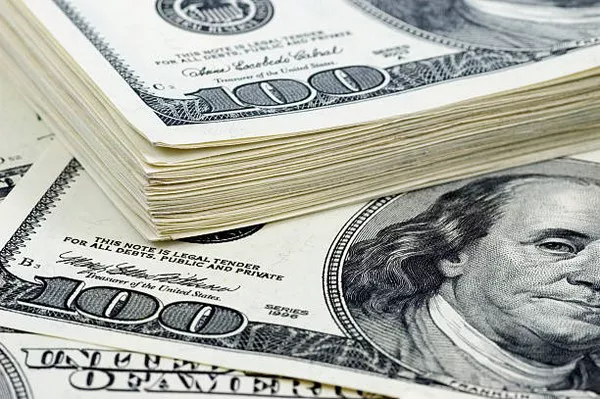The US dollar (USD) is not only the official currency of the United States but also serves as the world’s primary reserve currency. Its widespread use and acceptance across international borders underscore its global significance. To understand the economic impact and distribution of the USD, it is essential to examine how many US dollars are currently in circulation around the world. This article delves into the different measures of money supply, the factors influencing dollar circulation, and the broader implications for the global economy.
Money Supply
Definition and Measures
Money supply refers to the total amount of money available in an economy at a given time. Economists use several metrics to measure this, including:
M0 (or MB): This is the total of all physical currency in circulation, including coins and paper money. It represents the most liquid form of money.
M1: This includes M0 plus demand deposits (checking accounts) and other liquid assets that can quickly be converted into cash.
M2: This extends M1 to include savings accounts, time deposits under $100,000, and non-institutional money market funds.
M3: This includes M2 plus large time deposits, institutional money market funds, and other larger liquid assets.
Current Data on USD Money Supply
As of the latest data, the Federal Reserve provides detailed statistics on the US money supply. According to recent reports:
M0: Approximately $2.4 trillion. This figure represents the total amount of physical currency, including coins and paper money, in circulation within the US.
M1: Roughly $20 trillion. This broader measure includes all physical currency plus demand deposits and other highly liquid assets.
M2: About $21.5 trillion. This encompasses M1 plus savings deposits, time deposits, and other near-money assets.
M3: Although the Federal Reserve stopped reporting M3 in 2006, estimates suggest it would be slightly higher than M2, including large institutional deposits.
The Global Circulation of US Dollars
Domestic vs. International Circulation
The total money supply figures provided above mainly represent the amount of USD within the United States. However, the US dollar also circulates widely outside the country. International usage of the USD can be categorized into several forms:
Foreign Exchange Reserves: Central banks hold USD as part of their foreign exchange reserves. As of recent data, about $6 trillion of global reserves are in USD, reflecting its role as the primary global reserve currency.
International Trade: The USD is often used in international trade contracts and transactions. It accounts for more than 60% of global foreign exchange reserves and is the dominant currency for international trade settlements.
Offshore Dollar Deposits: Many financial institutions outside the US hold large amounts of USD. The total value of these deposits is estimated to be several trillion dollars.
Estimating Global Circulation
Calculating the exact amount of USD in circulation worldwide involves adding domestic figures to the estimated value held overseas. Based on available data:
Domestic Circulation: Approximately $21.5 trillion (M2), including all forms of money within the US.
International Circulation: Including foreign reserves, trade usage, and offshore deposits, estimates suggest an additional $10 trillion to $15 trillion in circulation globally.
Thus, the total estimated global circulation of US dollars ranges from $30 trillion to $36 trillion.
Factors Influencing USD Circulation
Economic Policies
Federal Reserve Actions: The Federal Reserve’s monetary policies, including interest rate adjustments and quantitative easing, impact the money supply. For instance, during economic downturns, the Fed may increase the money supply to stimulate growth.
Fiscal Policies: Government spending and taxation also influence the amount of USD in circulation. Expansionary fiscal policies can increase the money supply, while austerity measures might reduce it.
Global Demand for USD
Safe-Haven Status: The USD is often viewed as a safe haven during times of global economic uncertainty. This demand drives up the amount of USD held in foreign reserves and offshore accounts.
Trade and Investment: As the preferred currency for international transactions, the demand for USD grows with global trade and investment activities.
Technological Advances
Digital Currencies: The rise of digital and cryptocurrency markets introduces new dynamics to global money circulation. While these currencies do not directly affect USD circulation, they influence global financial systems and potentially alter the demand for traditional currencies.
Implications of USD Circulation
Economic Stability
Inflation and Deflation: The amount of USD in circulation impacts inflation rates. An excessive supply of money can lead to inflation, while a restricted supply might cause deflation.
Currency Value: The USD’s value relative to other currencies is influenced by its global supply and demand. A higher global circulation often strengthens the dollar, while a lower supply might weaken it.
Global Trade and Finance
Trade Balances: The extensive use of USD in international trade can lead to trade imbalances. Countries with large USD reserves may experience different economic effects compared to those with less reserve currency.
Financial Markets: USD circulation affects global financial markets, influencing interest rates, investment flows, and economic policies across nations.
See Also: What Percentage of World Trade is in USD?
Conclusion
The US dollar’s extensive circulation both within and outside the United States underscores its critical role in the global economy. With an estimated $30 trillion to $36 trillion in circulation worldwide, the USD remains a cornerstone of international trade, finance, and reserve holdings. Understanding these figures helps elucidate the dollar’s impact on global economic stability and its influence on international financial systems. As economic policies and global demand continue to evolve, monitoring the circulation of USD will remain crucial for economists, policymakers, and financial analysts worldwide.


